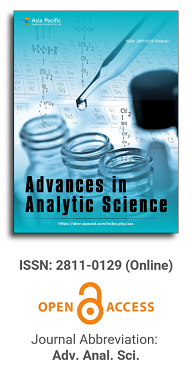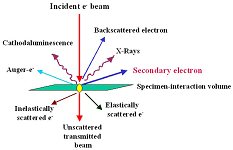
Asia Pacific Academy of Science Pte. Ltd. (APACSCI) specializes in international journal publishing. APACSCI adopts the open access publishing model and provides an important communication bridge for academic groups whose interest fields include engineering, technology, medicine, computer, mathematics, agriculture and forestry, and environment.

Determination of persistent organic pollutants in cow’s milk from national production by means of gas chromatography coupled to mass spectrometry (GC/MS)
Vol 3, Issue 1, 2022
Download PDF
Abstract
Persistent organic pollutants (POPs) are organic chemicals capable of persisting in the environment, being transported over long distances, bioaccumulating and biomagnifying in ecosystems. The harmful effects of these compounds on the environment and the health of living beings are of concern. In particular, humans can come into contact with POPs when consuming contaminated food of animal origin with a high fat content. In the Dominican Republic these compounds have been widely used and generated. However, the levels of POP exposure to which the population is exposed are unknown. Therefore, the objective of this study was to determine the presence of 34 POPs in five main brands of nationally produced cow’s milk. The samples were prepared using the QuEChERS extraction method and the analytical technique used was GC/MS. The results obtained indicated that no POPs were present in the samples. The results obtained indicated that there is no presence of the POPs evaluated in any of the cow’s milk samples, which suggests that their consumption does not represent a threat to the health of consumers. In addition, this study contributes to the knowledge on the evaluation of POPs in the Dominican Republic.
Keywords
References
- Secretariat of the Stockholm Convention. Listing of pops in the Stockholm Convention. Available online: http://chm.pops.int/theconvention/ thepops/allpops/tabid/2509/Default.aspx (accessed on 27 May 2019).
- World Health Organization (WHO) Persistent organic pollutants (pops). WHO. Available online: https://www.who.int/foodsafety/areas_work/chemical-risks/pops/en (accessed on 2 June 2021).
- Sbriz L, Aquino MR, Alberto De Rodriguez NM, et al. Levels of chlorinated hydrocarbons and trace metals in bivalves and nearshore sediments from the Dominican Republic. Marine Pollution Bulletin. 1998; 36(12): 971- 979. doi: 10.1016/S0025-326X(98)00097-6
- Lee DH, Lee IK, Song K, et al. A Strong Dose-Response Relation Between Serum Concentrations of Persistent Organic Pollutants and Diabetes. Diabetes Care. 2006; 29(7): 1638-1644. doi: 10.2337/dc06-0543
- Codex Alimentarius of Food and Agriculture Organization of the United Nations/World Health Organization FAO/WHO. Maximum Residue Limit (MRL). Available online: http://www.fao.org/fao-who- codexalimentarius/codex-texts/dbs/pestres/glossary/en/ (accessed on 26 January 2020).
- European Commission. EU Pesticides database. Available online: https://ec.europa.eu/food/plant/pesticides/eu- pesticides-database/public/?Event=homepage&language=EN (accessed on 26 January 2020).
- United States Environmental Protection Agency (US EPA). Regulation of Pesticide Residues on Food. Available online: https:// www.epa.gov/pesticide-tolerances (accessed on 2 June 2021).
- Fernández-Alba AR, García-Reyes JF. Large-scale multi-residue methods for pesticides and their degradation products in food by advanced LC-MS. TrAC Trends in Analytical Chemistry. 2008; 27(11): 973-990. doi: 10.1016/j.trac.2008.09.009
- Hernández F, Grimalt S, Pozo ÓJ, Sancho JV. Use of ultra-high-pressure liquid chromatography-quadrupole time- offlight MS to discover the presence of pesticide metabolites in food samples. Journal of Separation Science. 2009; 32(13): 2245-2261. doi: 10.1002/jssc. 200900093
- Lacina O, Urbanova J, Poustka J, Hajslova J. Identification/quantification of multiple pesticide residues in food plants by ultra-high-performance liquid chromatography-time-of-flight mass spectrometry. Journal of Chromatography A. 2010; 1217(5): 648-659. doi: 10.1016/J.CHROMA. 2009.11.098
- Polgár L, García-Reyes JF, Fodor P, et al. Retrospective screening of relevant pesticide metabolites in food using liquid chromatography high resolution mass spectrometry and accurate-mass databases of parent molecules and diagnostic fragment ions. Journal of Chromatography A. 2012; 1249: 83-91. doi: 10.1016/j.chroma.2012.05.097
- Chen X, Lin Y, Dang K, Puschner B. Quantification of Polychlorinated Biphenyls and Polybrominated Diphenyl Ethers in Commercial Cows’ Milk from California by Gas Chromatography-Triple Quadruple Mass Spectrometry. Plos One. 2017; 12(1): e0170129. doi: 10.1371/journal.pone. 0170129
- Jawaid S, Talpur FN, Nizamani SM, et al. Multipesticide residue levels in UHT and raw milk samples by GC- μECD after QuEChER extraction method. Environmental Monitoring and Assessment. 2016; 188(4). doi: 10.1007/s10661-016-5222-6
- Rahman MM, Lee HS, Abd El-Aty AM, et al. Determination of endrin and δ-keto endrin in five food products of animal origin using GC-μECD: A modified quechers approach to traditional detection. Food Chemistry. 2018; 263, 59-66. doi: 10.1016/J.FOODCHEM. 2018.04.099
- Selvi C, Paramasivam M, Rajathi DS, Chandrasekaran S. Multiresidue Analysis of Organochlorine Pesticides in Milk, Egg and Meat by GC-ECD and Confirmation by GC-MS. Bulletin of Environmental Contamination and Toxicology. 2012; 89(5): 1051-1056.
- Battu RS, Singh B, Kang BK. Contamination of liquid milk and butter with pesticide residues in the Ludhiana district of Punjab state, India. Ecotoxicology and Environmental Safety. 2004; 59(3): 324-331. doi: 10.1016/j.ecoenv.2003.08.017.
- Dagnac T, Garcia-Chao M, Pulleiro P, et al. Dispersive solid-phase extraction followed by liquid chromatography–tandem mass spectrometry for the multi-residue analysis of pesticides in raw bovine milk. Journal of Chromatography A. 2009; 1216(18): 3702-3709. doi: 10.1016/j.chroma.2009.02.048
- Fromberg A, Granby K, Højgård A, et al. Estimation of dietary intake of PCB and organochlorine pesticides for children and adults. Food Chemistry. 2011; 125(4): 1179-1187. doi: 10.1016/J. FOODCHEM.2010.10.025
- Martins JG, Amaya Chávez A, Waliszewski SM, et al. Extraction and clean-up methods for organochlorine pesticides determination in milk. Chemosphere. 2013; 92(3): 233-246. doi: 10.1016/j.chemosphere. 2013.04.008
- Rahman MM, Lee HS, Abd El-Aty AM, et al. Determination of endrin and δ-keto endrin in five food products of animal origin using GC-μECD: A modified quechers approach to traditional detection. Food Chemistry. 2018; 263, 59-66. doi: 10.1016/J.FOODCHEM. 2018.04.099
- Rawash ES, Mohamed G, Souaya E, et al. Distribution and Health Hazards of Polycyclic Aromatic Hydrocarbons in Egyptian Milk and Dairy-Based Products. Beverages. 2018; 4(3): 63. doi: 10.3390/beverages4030063
- Rodríguez M, De Pratt C, Peña C, Beltré B. Determination of organochlorine pesticides in vegetables: broccoli, lettuce and celery from the Constanza Valley. Available online: https://docplayer.En/67500237-Base-de-datos-de- compuestos-organicos-persistentes-cop-s-en-la-republica-dominicana.html (accessed on 26 January 2020).
- Deiana P, Fatichenti F. Pesticide residues in milk processing. Italian Journal of Food Science (Italy). 1992; 4(4): 229-245.
- National Institute of Standards and Technology. NIST Standard Reference Database 1A v17|NIST. Available online: https://www.nist.gov/srd/nist-standard-reference-database-1a-v17 (accessed on 26 January 2020).
- Wiley. Wiley Registry of Mass Spectral Data, 11th Edition. Available online: https://www.wiley.com/en- us/Wiley+Registry+of+Mass+Spectral+Data%2C+11th+Edition-p-9781119171010 (accessed on 2 June 2021).
- Pastor Ciscato CH, Gebara AB, de Souza Spinosa H. Pesticide residues in cow milk consumed in são paulo city (BRAZIL). Journal of Environmental Science and Health, Part B. 2002; 37(4): 323-330. doi: 10.1081/pfc- 120004473
- Lorenzatti EA, Maitre MI, Lenardon A. Evaluation of pesticide contamination in dairy products. Revista FAVE Ciencias Veterinarias. 2003; 2(1): 56.
- Lans-Ceballos E, Lombana Gomez M, Pinedo-Hernández J. Residuos de pesticidas organoclorados en leche pasteurizada distribuida en Montería, Colombia. Revista de Salud Pública. 2018; 20(2): 208-214. doi: 10.15446/rsap.v20n2.51175
- Muñoz C. Residue Levels of Organochlorine Pesticides in UHT Pasteurized Milk from the IX and X Regions of Chile (Universidad Austral de Chile). Available online: http://cybertesis.uach.cl/tesis/uach/2005/ fam828n/doc/fam828n.pdf (accessed on 26 January 2020).
Supporting Agencies
Copyright (c) 2022 Camila Marranzini, Lizaira Bello, Alejandro Vallejo Degaudenzi, Aris Mendis Gomez, Enmanuel Echavarría

This work is licensed under a Creative Commons Attribution 4.0 International License.

This site is licensed under a Creative Commons Attribution 4.0 International License (CC BY 4.0).
1.jpg)
Prof. Sivanesan Subramanian
Anna University, India





.jpg)
